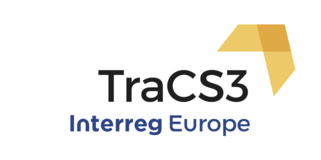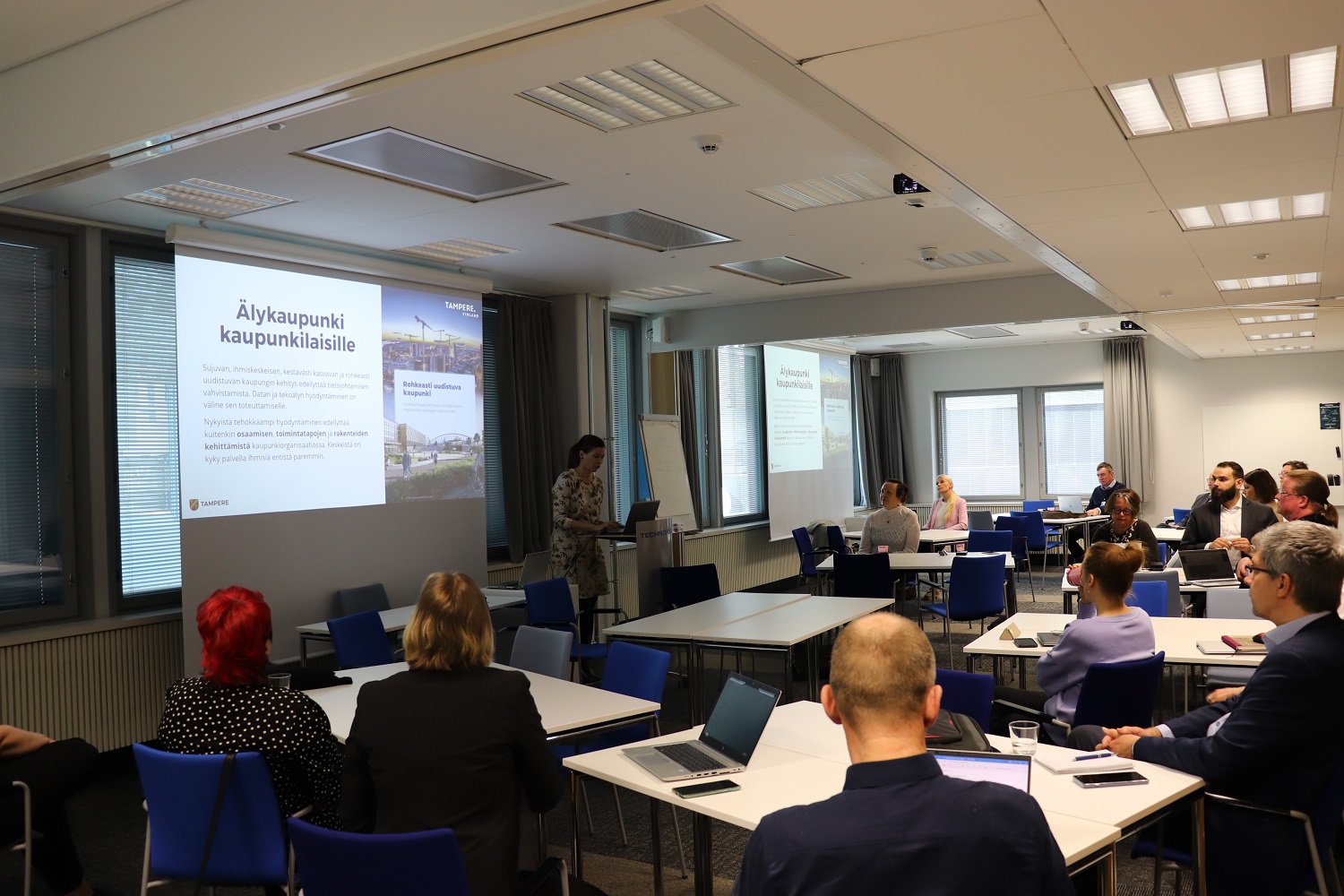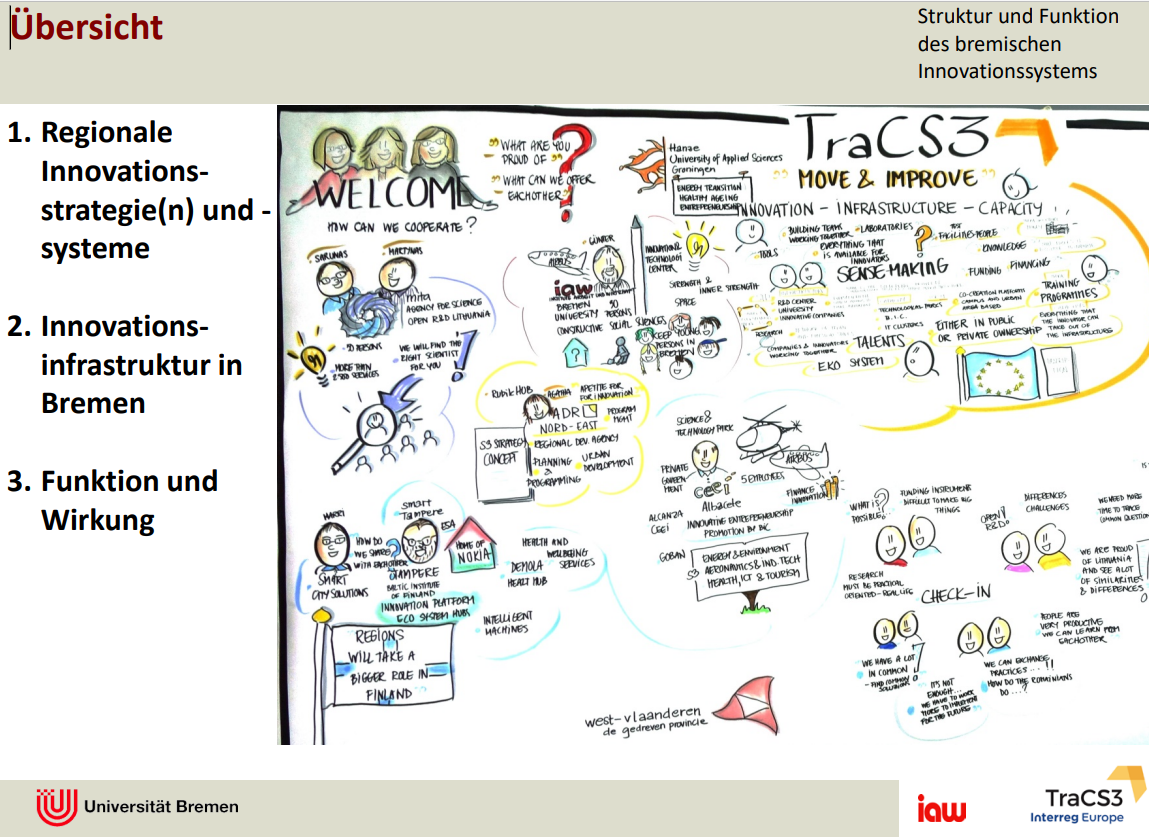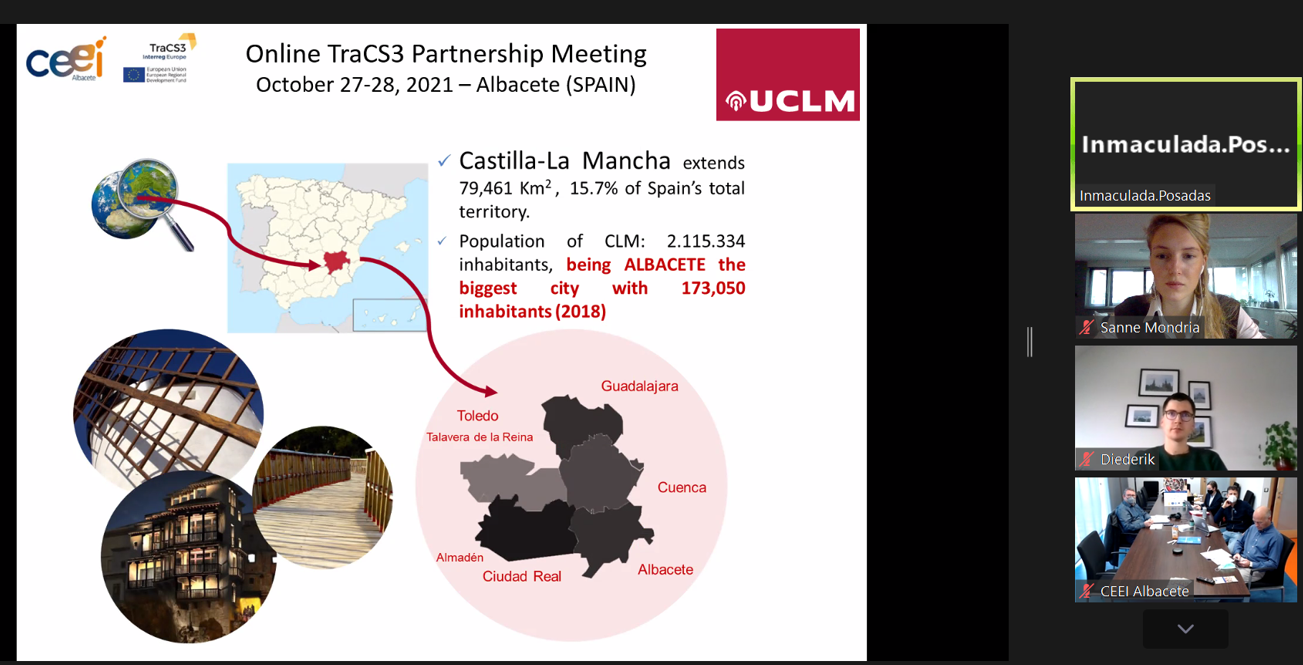On April 28th, a digital regional stakeholder meeting was held in Bremen in cooperation with the TRaCS3 project partners from Tampere, Finland, who presented a good practice from their region. Nearly 30 participants from research and innovation infrastructures and local political authorities learned about approaches from Tampere and Bremen, and discussed the potential and possibilities of monitoring and visualizing innovation infrastructures.
Peter Krämer, Free Hanseatic City of Bremen, The Senator for Climate Protection, Environment, Mobility, Urban Development and Housing, Staff Unit 7-1 | European Territorial Cooperation (INTERREG), held a presentation on innovation-related potentials and opportunities for cooperation in the course of the Interreg programs. He highlighted various connections to innovation promotion within the planned upcoming programs.
The TraCS3-partners from Finland, Johanna Vannes, The Baltic Institute of Finland, and Marja-Riitta Mattila-Nurmi, Council of Tampere Region, illustrated the approach and the concept of ecosystem monitoring and the visualization of the innovation system for the Tampere region. The approach from Tampere is based on about 50 innovation-related indicators and a mapping of the local innovation ecosystem. This is visualized as a network structure of topics, content and actors and can be accessed online.
Tina Schneider and Gerrit Eisele presented a visualization of the innovation infrastructures of the Federal State of Bremen based on the results of the TraCS3 project. This approach is based on a spatial localization of the innovation infrastructures in the state of Bremen on a digital map, linked with retrievable and filterable data about their respective properties, including user groups, offers, and technological specialization.
Topics of discussion were, among others, how the presented approaches of innovation ecosystem monitoring and visualization could be further developed, if they could be used to enhance inner- and interregional cooperation, which end-users should be addressed, and the different approaches of visualization.










